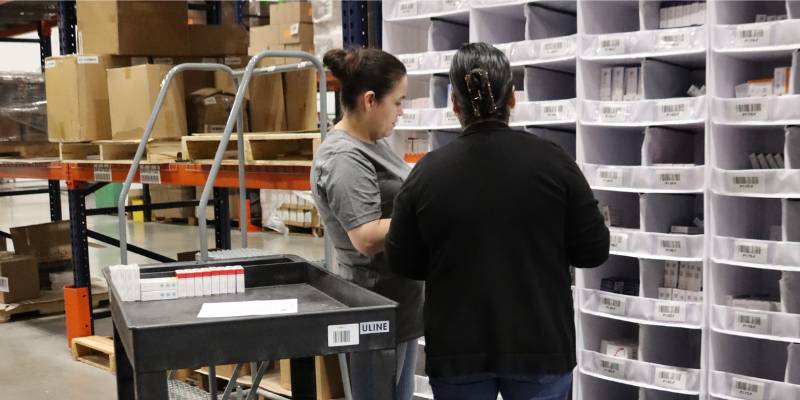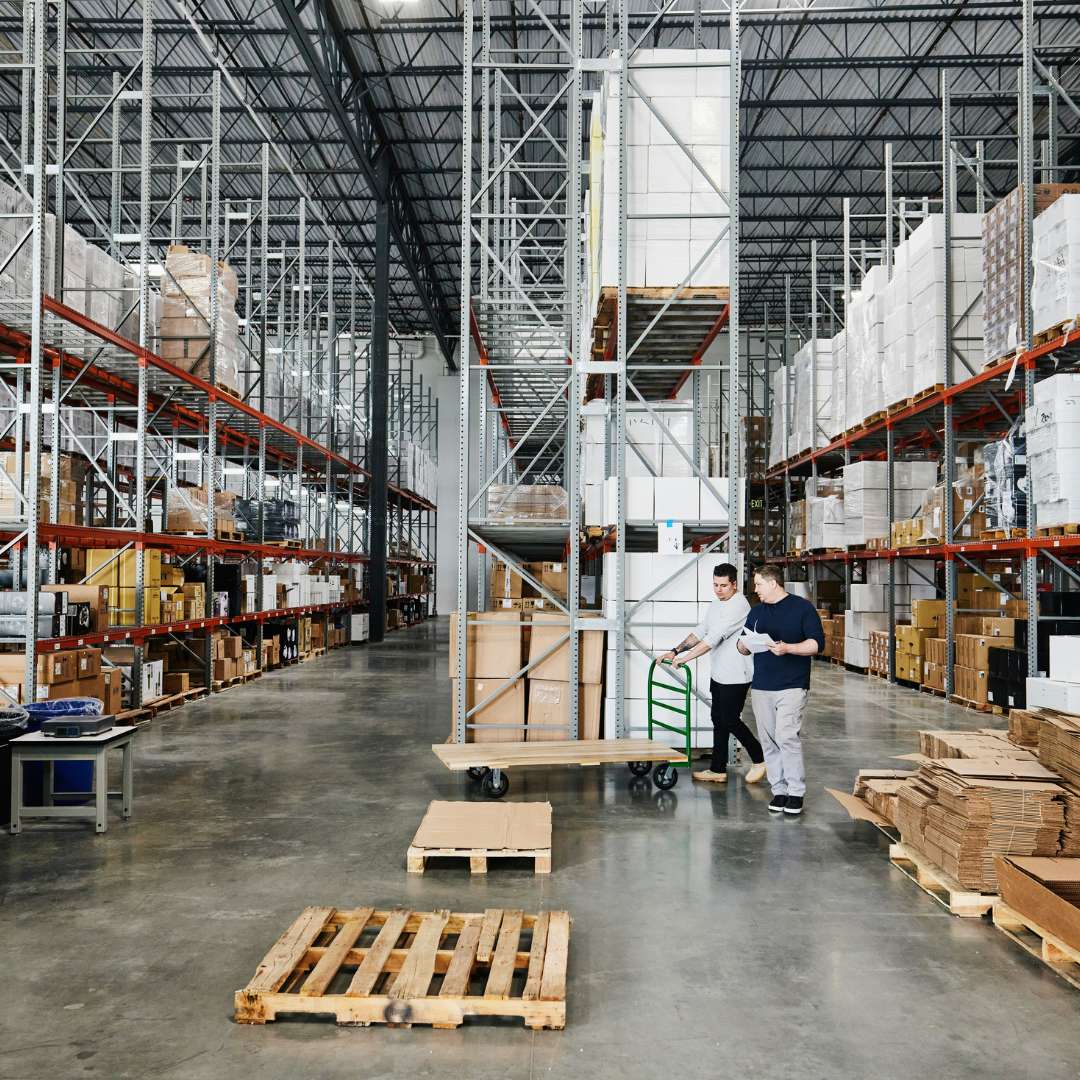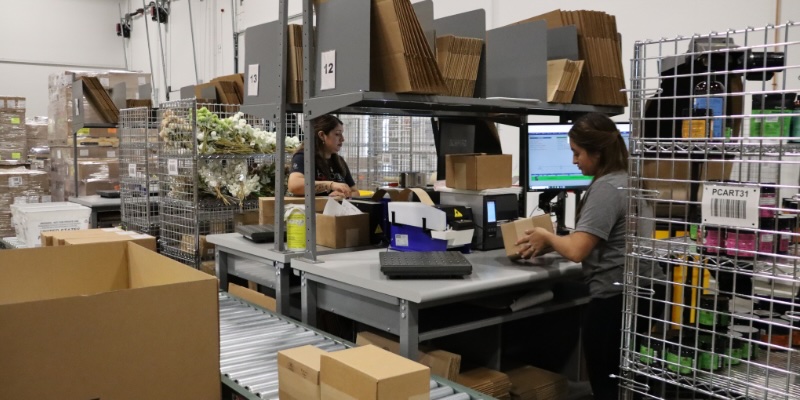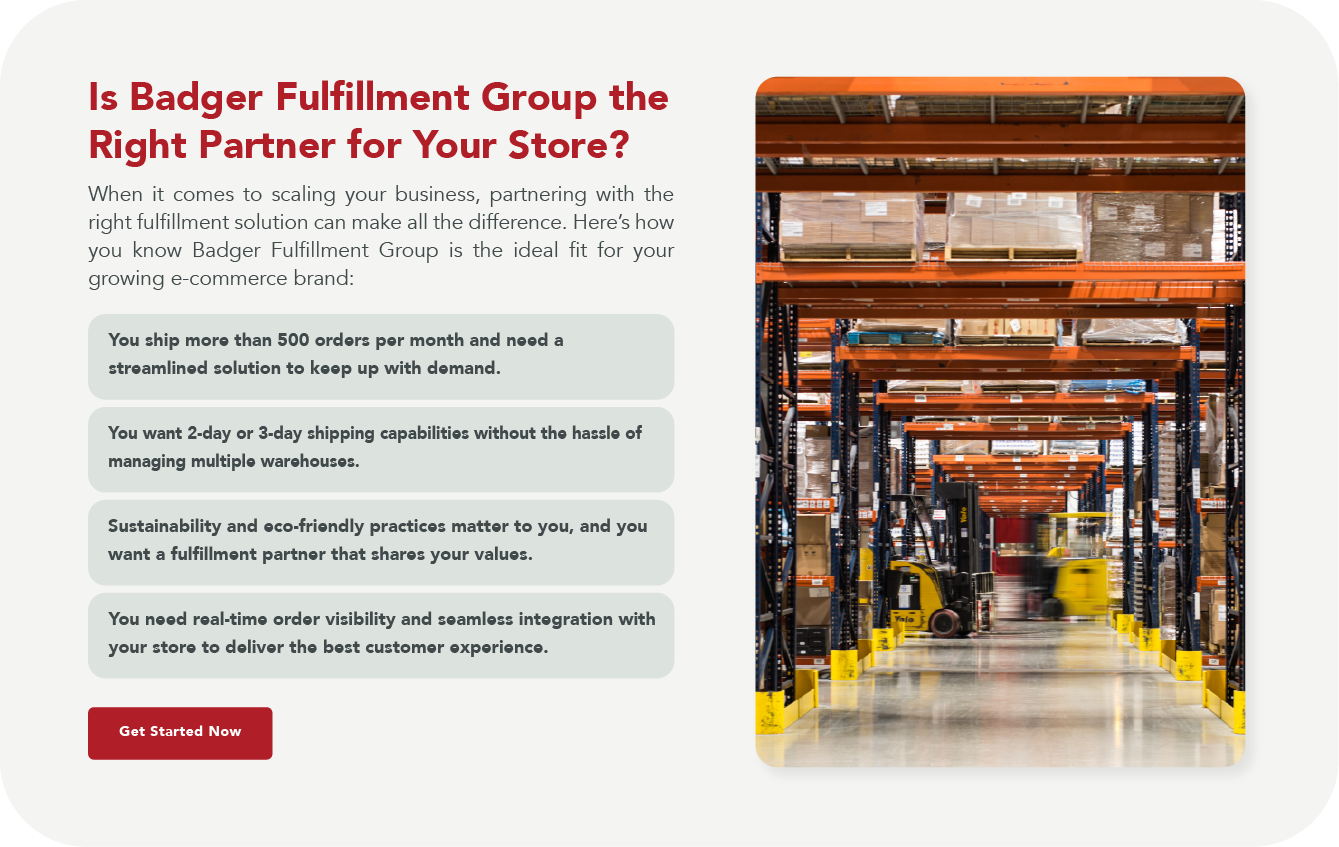In the bustling world of eCommerce, understanding order fulfillment costs is paramount. These costs play a pivotal role in determining profitability and customer satisfaction. Let’s delve into the granular details of order fulfillment costs, from inventory intake to final delivery.
Why Understanding Fulfillment Costs is Crucial:
Order fulfillment is more than just dispatching products; it’s a nuanced process affecting profitability. Every product’s retail price needs to factor in costs beyond production, including shipping, handling, and potential returns. Properly accounting for these ensures profitability and competitive pricing.
Components of Fulfillment Costs:
Receiving
Receiving is the foundational step in the order fulfillment process and establishes the rhythm for every subsequent stage. When goods arrive at a fulfillment center, they undergo a detailed receiving procedure to ensure accuracy and quality control. This process encompasses more than just accepting shipments. Each item is inspected, counted, and verified against the provided purchase order or shipment details. Efficient receiving ensures that inventory levels are correct, mitigates the risk of shipping errors down the line, and enables real-time inventory tracking. Moreover, a well-managed receiving process can identify discrepancies or damages early on, allowing businesses to address issues with suppliers or manufacturers promptly. Given its critical nature, the efficiency and accuracy of the receiving process have a cascading effect on the entire order fulfillment chain. At its core, effective receiving is all about setting the stage for seamless operations and unparalleled customer satisfaction.
Intake Procedures: Every product entering a fulfillment center goes through a receiving process, from unloading shipments to entry into inventory systems.
Special Handling: Products may come with unique storage needs, from climate-controlled environments to security requirements.
Assembly and Kitting: Some products may need light assembly, or multiple items may need to be grouped together (kitting) before shipping.
Warehousing
Warehousing is the silent powerhouse behind the dynamic world of eCommerce. It’s not just about storing products; it’s about ensuring that products are safe, easily accessible, and ready for dispatch whenever an order is placed. A well-organized warehouse is designed for optimal space utilization, product accessibility, and inventory turnover. It provides a systematic approach to store goods, making it easier for workers to locate items, thereby speeding up the picking and packing process. But warehousing goes beyond just stacking boxes. It involves an intricate dance of inventory management, ensuring that stock levels are maintained, overstock scenarios are avoided, and out-of-stock situations are minimized. Modern warehouses incorporate technology like real-time inventory tracking systems and robotic assistance to improve accuracy and efficiency. Additionally, strategic warehousing ensures that products are stored under appropriate conditions – be it temperature control for perishable items or enhanced security for high-value goods. In essence, warehousing is about safeguarding a business’s assets and ensuring they are always ready to meet customer demands.
Storage Fees: Products occupy space, and space equals money. Warehousing costs include monthly fees based on cubic footage or pallets.
Special Storage: Some items, like perishables or electronics, require unique storage conditions, adding to costs.
In-House Costs: Businesses managing their own warehouses must factor in overheads like rent, utilities, and maintenance.
Pick and Pack
It begins with ‘picking‘ – where workers, often guided by advanced warehouse management systems, navigate the warehouse aisles to select the specific items ordered by a customer. The efficiency of this step is crucial, as it can significantly influence order processing times and overall customer satisfaction. Once items are picked, they move to the ‘packing’ stage. Here, products are securely packaged, ensuring they are protected during transit. The right packing materials, be it bubble wrap for fragile items or thermal insulation for perishables, can make all the difference in delivering items in pristine condition.

Picking Precision: This involves meticulously selecting the right product and ensuring its integrity.
Packaging Costs: Beyond just putting products in boxes, custom packaging, branding, and protective materials can add up.
Volume Variations: Costs may vary based on the number of items in an order, with discounts possible for bulk shipments.
Shipping
It’s not just about transporting a package; it’s about ensuring that the product reaches its destination promptly, securely, and in the same condition as when it left the warehouse. The shipping process starts with selecting the best carrier and delivery option, factoring in the package’s dimensions, weight, destination, and the customer’s delivery preferences.
Modern shipping strategies often incorporate real-time tracking capabilities, allowing both the business and the customer to monitor the package’s journey. This transparency helps mitigate potential delivery issues, ensuring timely interventions if delays occur. Additionally, shipping isn’t a one-size-fits-all operation. It requires flexibility – from offering express deliveries for urgent orders to providing eco-friendly options for environmentally conscious consumers. International shipping adds another layer of complexity, requiring careful navigation of customs regulations, duties, and international logistics challenges.
Carrier Choices: From FedEx to UPS, the choice of carrier can greatly influence costs.
Distance and Urgency: Faster delivery, especially over long distances, incurs higher fees.
Product Specifics: Fragile, oversized, or special items can demand higher shipping fees.
Returns
Returns are an inevitable aspect of the eCommerce landscape, representing both a challenge and an opportunity for businesses. While managing returns entails logistical considerations—like inspecting returned items, restocking inventory, and processing refunds—it also offers a chance to reinforce brand loyalty. A seamless and hassle-free return policy can ease customer apprehensions, encouraging them to shop with confidence. Moreover, the manner in which a business handles returns—be it through swift refunds, clear communication, or free return shipping—can significantly influence a customer’s decision to shop again. Thus, while returns might initially seem like a setback, they provide a pivotal touchpoint to demonstrate a brand’s commitment to customer satisfaction and service excellence.
Processing Returns: This involves receiving, inspecting, and potentially restocking items.
Cost Implications: Every return has associated costs, from shipping to potential product loss or damage.
Fulfillment by Amazon (FBA)
FBA allows sellers to store their products in Amazon’s fulfillment centers. Amazon takes responsibility for storage, packaging, and shipping.
Cost Implications: Amazon charges for storage and ‘fulfillment fees’ per item sold. The fees vary based on the size and weight of items.
Advantages and Drawbacks: While FBA offers exposure and the allure of Prime shipping, it might not be cost-effective for larger items or products with low margins.
“In our experience with fulfillment optimization, we've found several ways to save costs for our clients. For instance, one client consistently sent thirty 6-pack case configurations, which posed an opportunity for cost reduction on recurring larger pallet orders. In this scenario, we'd advise switching to 12-pack case configurations, which significantly lowers the case handling cost in fulfillment. This strategy is effective while keeping weights and dimensions within manageable handling ranges. Another similar example is for products with a minimum order quantity that might be 100 units. We proposed a shift from 6-packs to 20-packs. This adjustment reduced the number of warehouse picks and enhanced the overall cost-efficiency of the fulfillment process. Strategic packaging from your manufacturer and configuration decisions can lead to considerable savings down the road in fulfillment operations.”
Jared KobrigerAccount Manager & Co-Founder
Calculating Average Fulfillment Costs
To get a handle on your per-order fulfillment cost, choose a consistent evaluation period—monthly or quarterly. Sum up all the associated expenses, including outliers like damaged inventory costs. Then divide the total by the number of orders in that period. This gives an average cost per order.
The Intangibles and Hidden Costs
Beyond the tangible, some indirect costs and value propositions play into the fulfillment equation:
Account Management and Hidden Costs: Some fulfillment entities might charge for SKU management, long-term storage, or account management. Understanding the minutiae of your contract can prevent unforeseen expenses.
Quality and Brand Image: A reliable fulfillment process enhances brand reputation, leading to repeat business and customer loyalty.
Flexibility and Scalability: As your business grows, fulfillment needs change. A flexible fulfillment partner can adapt, preventing potential growing pains.
While cost evaluation remains fundamental, fulfillment transcends monetary metrics. It embodies a brand’s promise to its customers—a testament to its commitment. At Badger Fulfillment Group, we prioritize this commitment, offering tailored, scalable solutions to meet diverse eCommerce needs. Let’s redefine fulfillment together.
While cost evaluation remains fundamental, fulfillment transcends monetary metrics. It embodies a brand’s promise to its customers—a testament to its commitment. At Badger Fulfillment Group, we prioritize this commitment, offering tailored, scalable solutions to meet diverse eCommerce needs. Let’s redefine fulfillment together.
Other Helpful Resources
If you’re looking to dive deeper into the world of order fulfillment and optimize your operations, we’ve gathered some valuable resources. These links will help you explore various aspects, from inventory management to shipping strategies, all while staying cost-effective.
- Order Fulfillment Services Overview- Explore the range of services offered by Badger Fulfillment Group, including pick, pack, and ship, warehousing, and 2-day shipping, all designed to streamline your fulfillment process.
- Inventory Management 101 – Learn strategies for improving inventory turnover and avoiding stockouts, ensuring your products reach customers on time.
- Shopify Fulfillment Solutions – If you’re a Shopify seller, this resource explains how to integrate with Badger Fulfillment to simplify your order process, from receiving orders to shipping them within 2 days.
- How to Manage Inventory Effectively – This guide from Forbes offers practical tips on managing inventory, helping you balance stock levels, avoid excess inventory, and maintain smooth operations without breaking the bank.
These resources can help ensure your order fulfillment operations are both efficient and cost-effective, providing you with the tools and strategies you need to succeed in today’s competitive market.




